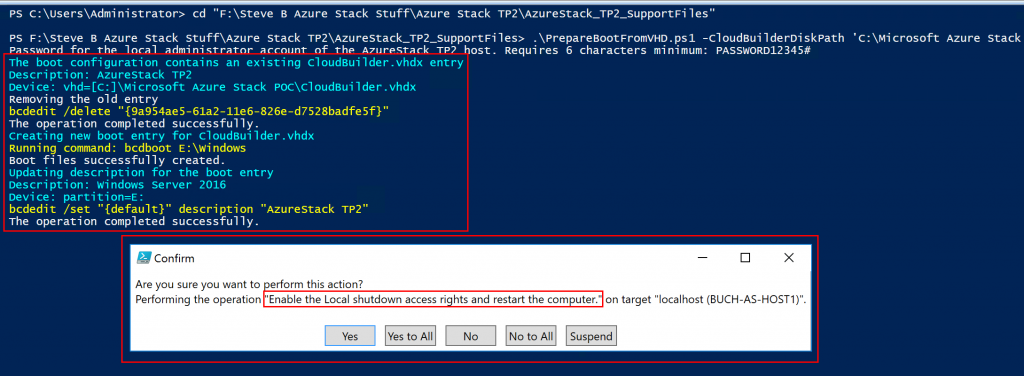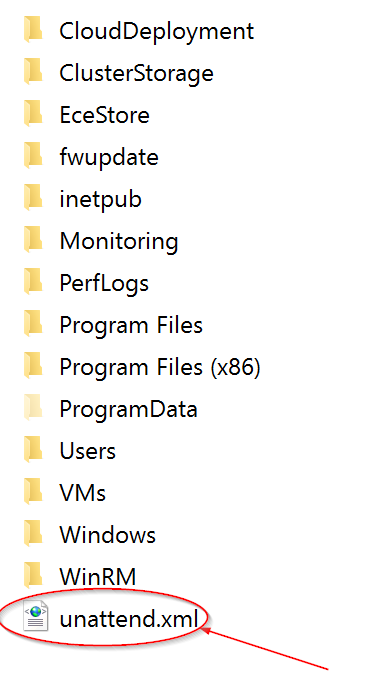When deploying Azure Stack (TP2) you may not have a KVM, a physical monitor, or maybe you just don’t want to use either with the host. Well there is a solution for this. You can utilize a Windows setup answer file for an unattended installation. What this will do is automate the Windows Setup for you. For Azure Stack you basically just need to input the administrator password. 🙂
Microsoft has put together an answer file and a PowerShell script that enables you to inject an answer file into CloudBuilder.vhdx before deploying Azure Stack. What this will do is enter info on the Windows setup screen for you so that you don’t have to have a KVM or physical monitor attached to the host. You can just wait for the host to reboot and then RDP in. This unattended answer file and script is a part of the AzureStack-Tools. The AzureStack-Tools have some great resources in the repository and I will be blogging about more of them in the future.
There are basically 2 steps to inject this answer file into your Azure Stack VHDX. These are:
Step 1:
Go and download the Deployment tools files manually onto your Azure Stack host from here:
https://github.com/Azure/AzureStack-Tools/tree/master/Deployment
Or run this PowerShell from your Azure Stack host:
# Variables
$Uri = ‘https://raw.githubusercontent.com/Azure/AzureStack-Tools/master/Deployment/‘
$LocalPath = ‘YOURLOCATION:\AzureStack_TP2_SupportFiles’
# Create folder
New-Item $LocalPath -Type directory
# Download files
‘BootMenuNoKVM.ps1’, ‘PrepareBootFromVHD.ps1’, ‘Unattend.xml’, ‘unattend_NoKVM.xml’ | foreach { Invoke-WebRequest ($uri + $_) -OutFile ($LocalPath + ‘\’ + $_) }
Be sure to set $LocalPath to your location.
Step 2:
NOTE: You need to have the CloudBuilder.vhdx downloaded to your Azure Stack host and it cannot be mounted.
From within PowerShell navigate to the directory you downloaded the deployment tools to and run this
.\PrepareBootFromVHD.ps1 -CloudBuilderDiskPath YOURDRIVE:\CloudBuilder.vhdx -ApplyUnattend
Be sure to point the script to the location containing your CloudBuilder.vhdx before running this.
You will be prompted to enter the password you want to use for the local administrator account.
You will see the bcdedit command execution and output as shown in the following screenshot. This saves you the step of modifying the bcdedit. The CloudBuilder.vhdx will also be mounted. You will then be asked to confirm a reboot also as shown in the following screenshot.
Before you reboot if you are interested you can go see the unattend.xml file that was created. This is the answer file that will be used. This is shown in the following screenshot.
The host will be rebooted. When it comes back online you will be able to RDP in. You will then be able to kick off the Azure Stack deployment.
Happy Azure Stacking!!!



